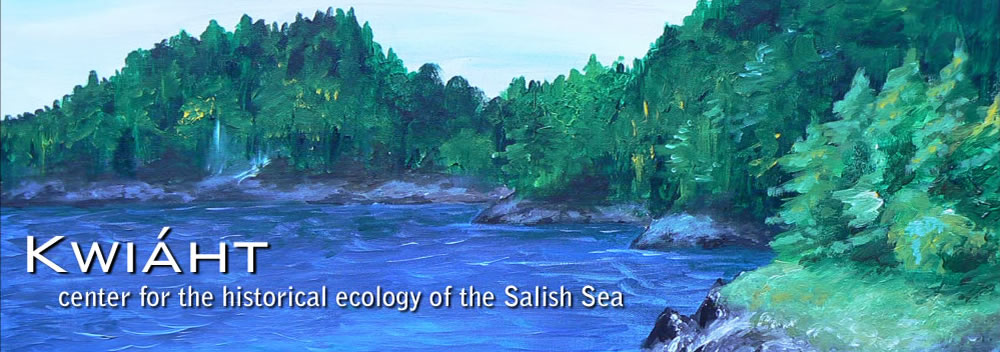Wetland Recovery

Recreated stream on Lopez first winter
The term "habitat restoration" is problematic because it implies that historical landscapes and assemblages of species can be recreated. If there is one thing that rigorous, long-term studies of disturbance in ecosystems has shown, it is that colonization by new species and changes in nutrient pathways are generally irreversible. Like human societies, ecosystems can move forwards but not backwards. The direction of future change can nevertheless be influenced by measures such as recreating key geophysical processes (tidal flux, sediment transport, slope stability, freshwater quality); reintroducing or promoting native species; removing or suppressing non-native species. Such measures can help perpetuate targeted native species within new assemblages, under changing conditions. They can also reduce erosion, and improve water quality.
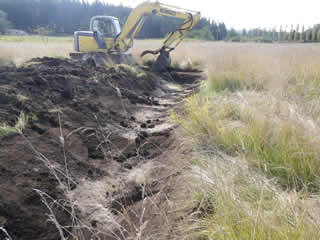
Channel excavation for rebuilding historic stream
Plowing, livestock-raising, drainage ditches and stream diversions have modified most of the wetlands in the San Juan Islands. Excavating shallow native wetlands to create ponds, widely practiced before 1970 for irrigation water or fire protection, continues as historical agricultural areas become residential. Kwiáht estimates from analyzing topography, soils and historical maps that wetland acreage on Lopez Island has decreased 80 percent since 1860, and streams have decreased even more, resulting in the complete disappearance of freshwater fish (apart from fish annually planted in Hummel Lake for sports fishermen).
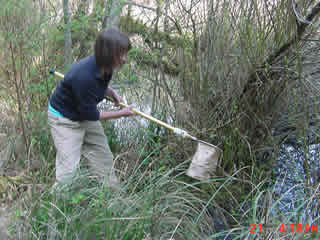
Collecting aquatic insect indicators
Kwiáht researchers used invertebrate diversity to compare historical Lopez farmland that has been abandoned, is still conventionally farmed, or is farmed with habitat reserves and buffer belts, with relatively intact wetlands. Invertebrate diversity was nearly as great and abundance greater on working farms with reserves and buffers, compared to intact habitat nearby. Abandoned farmland had the lowest invertebrate diversity, the lowest abundance, and more non-native species.
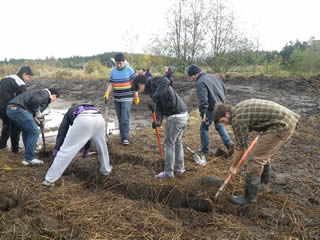
Digging control structure by hand
We are investigated practical, affordable ways that island farmers as well as homeowners can construct habitat patches and connecting corridors into lived and worked landscapes. A pilot site on Lopez Island includes a seven-acre recreated shallow wetland and a re-dug quarter-mile stream channel, begun in 2011. "Layers" of locally sourced vegetation have been added each year. The surrounding acreage is a working sheep pasture and hayfields. A public trail is planned through the wetland, inviting islanders to participate in learning how we can most effectively "recycle" some of our farmed wetlands while conserving, if not increasing farm incomes.
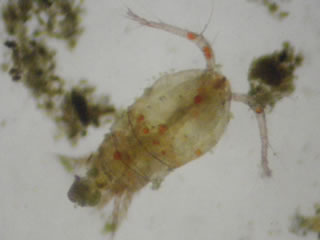
Chyclopoid copepod - a wetland indicator
Research Paper: Wetland farming study
